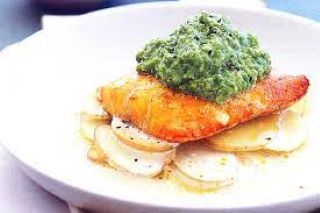Traditions of Good Friday
Today is Good Friday. It is the most important day of the Christian calendar, when believers commemorate Jesus Christ's crucifixion. It is a day of penance and fasting as the Bible says that Jesus willingly suffered and died by crucifixion as the ultimate sacrifice to atone for the sins of humanity before God. Most churches around the world have a crucifix as the focal point of the altar for this reason.



Good Friday also marks the end of the 40-day period of preparation and self-sacrifice which leads up to this, called Lent.
Whilst is generally a quiet, sombre day of reflection, there are some special traditions associated with the day.
Firstly, Church services are held all around the world, generally at 3pm, which is believed to be time of Christ’s death.
Secondly, it is a day where meat is not generally eaten. In many places (including Australia), it is traditional to have fish for dinner on Good Friday, and in particular, smoked cod. I couldn’t seem to find out why smoked cod was a favoured type of fish to eat. Perhaps there is a reader who could let us know!



Another tradition of Good Friday is the eating of Hot Cross Buns. They are sweet, spiced buns made with flour, yeast and fruit and candied peel, and have a cross made of dough paste on the top. They are usually eaten warm, cut in half and buttered. Do you have Hot Cross Buns where you live? Is this how you eat them too?



There are various legends about the origins of Hot Cross Buns.
One is that they go back to the time of the Ancient Egyptians, who baked small round breads topped with crosses to pay homage to the gods. The cross divided the bread into four equal sections, representing the four phases of the moon and/or the four seasons, depending on the occasion. Later, Greeks and Romans offered similar sweetened rolls in tribute to Eos, the goddess of the morning, and to Eostre, the goddess of light.
The English word bun is a derivation of the Greek word for ceremonial cakes and breads, boun. 1
This continued through the Middle Ages, but it was in the 12th century that an English monk decorated his freshly baked buns with a cross on Good Friday, also known as the Day of the Cross. The custom gained traction, and over the years, fruits and precious spices were included to represent health and prosperity.
Spiced buns were banned when the English broke ties with the Catholic Church in the 16th century. However, by 1592, Queen Elizabeth I relented and granted permission for commercial bakers to produce the buns for funerals, Christmas, and Easter. Otherwise, they could be baked in homes. 1
The tradition has continued ever since. The commercialism of the Western world today now means that you can buy Hot Cross Buns with or without fruit, as chocolate buns with or without chocolate chips, plus other available variations! They are very popular here in Australia, and nowadays are available in supermarkets soon after Christmas!
I remember reciting the following rhymes with the neighbourhood children. They were apparently a street cry called by street-sellers in the open-air markets dating back to 17th century England:
“One a penny, two a penny, hot cross buns!
If you’ve no daughters, give them to your sons,
And if you’ve no kind of pretty little elves,
Why then good faith, e’en eat them all yourselves”
“One a penny, two a penny, hot cross buns!
Butter them and sugar them and put them in your muns (i.e. mouths).
Hot cross buns, hot cross buns!
One a penny poker, two a penny tongs, three a penny fire shovel, Hot cross buns!”
Footnotes
- With thanks to the ravenhook.com/bread-blog
